Last-Minute NYC Holiday Gift Guide 🎁
We’ve created a holiday gift guide with presents for the intrepid New Yorker that should arrive just in time—


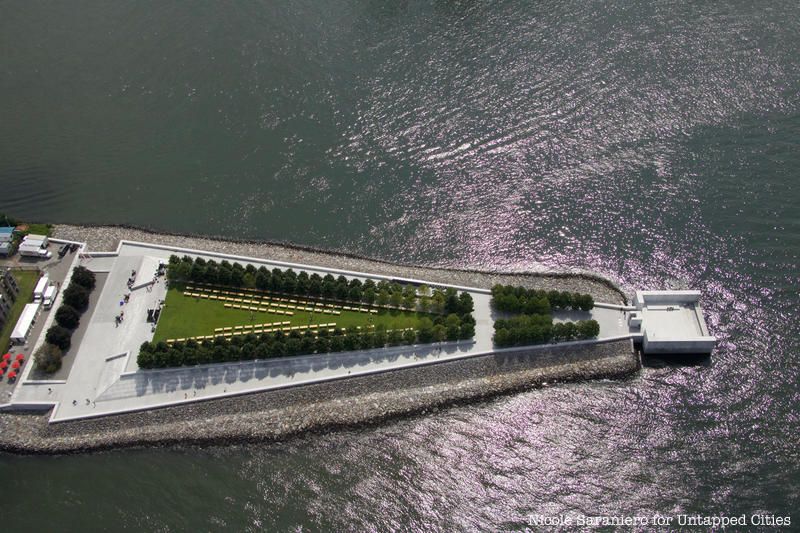
Franklin D. Roosevelt Four Freedoms Park, on the southern tip of Roosevelt Island, was New York City’s long-awaited memorial to United States President Franklin Delano Roosevelt. As far back as the early 1970s, New Yorkers began to voice their opinions on the need for a memorial to New York’s most well-known American president. Plans were developed and an architect was chosen, but the final park took decades to bring to fruition.
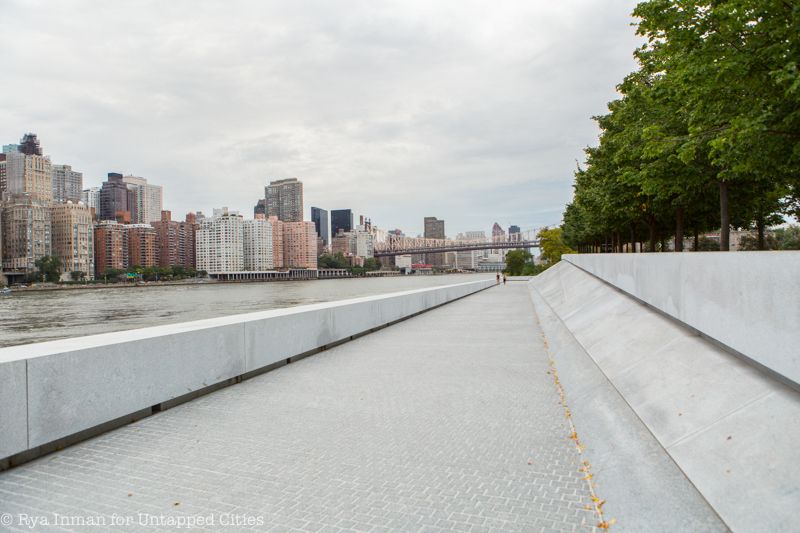
The idea for a memorial to Franklin D. Roosevelt was first brought up in 1970, when input from residents of New York City highlighted a desire for a monument to the most well-known native New Yorker president. It was simultaneously proposed that the island in the middle of the East River – then called “Welfare Island” – be renamed in Roosevelt’s honor. The city commissioned architect Louis Kahn for the memorial, and in 1973 he began drawing up the plans for Four Freedoms Park. The park is Kahn’s only design in New York City, and it was the architect’s last major work before his death in 1974. Kahn died of a heart attack in Penn Station, with a final rendering of his completed design for Four Freedoms Park in his briefcase.
Alongside the death of the park’s lead architect came an economic crisis, hitting New York in the mid-‘70s. The southern tip of Roosevelt Island thus sat empty, in a state of complete neglect, for decades until the idea of the park was revived in the early 2000s. Construction of the park finally began in 2010, and it was officially opened to the public on October 24, 2012.
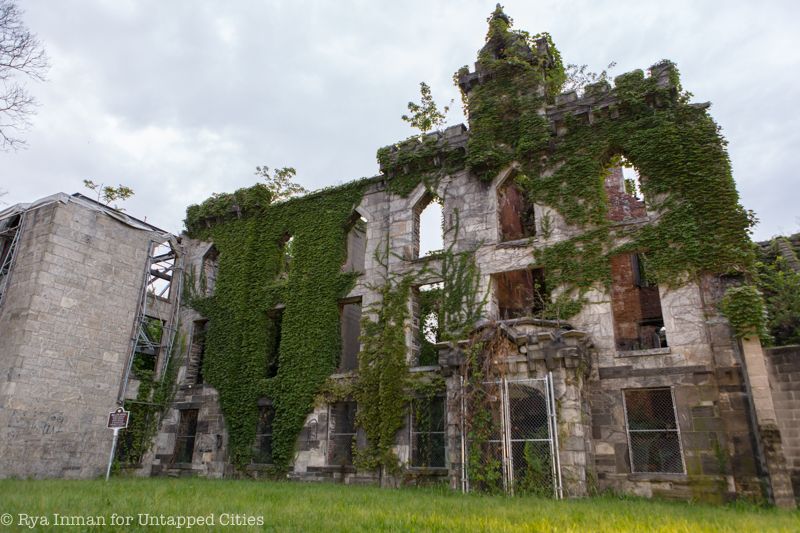
At the entrance to Four Freedoms Park stand the ruins of the old Smallpox Memorial Hospital. Designed by the architect James Renwick, Jr., the building is also sometimes referred to as the Renwick Ruin. Now crumbling and abandoned, the smallpox hospital provides stark juxtaposition to the sharp lines and tones of gray throughout Four Freedoms Park. The restoration team intends to keep it that way, too.
The site is on the National Register of Historic Places and was designated an official New York City landmark, not as a hospital building, but as the ruin of one. This designation makes the Smallpox Hospital the only landmarked ruin within New York City. The State of New York recently awarded $500,000 dollars to complete further studies and construction documents to entirely stabilize the building. If the hospital is fully restored, it will still bear a resemblance to its current abandoned state, with renovations being made only to reinforce the structure’s stability. The plan is to leave is open to the public, so you can walk through the old hospital still with holes in its walls, its roof unpatched in areas, and ivy growing up the sides.
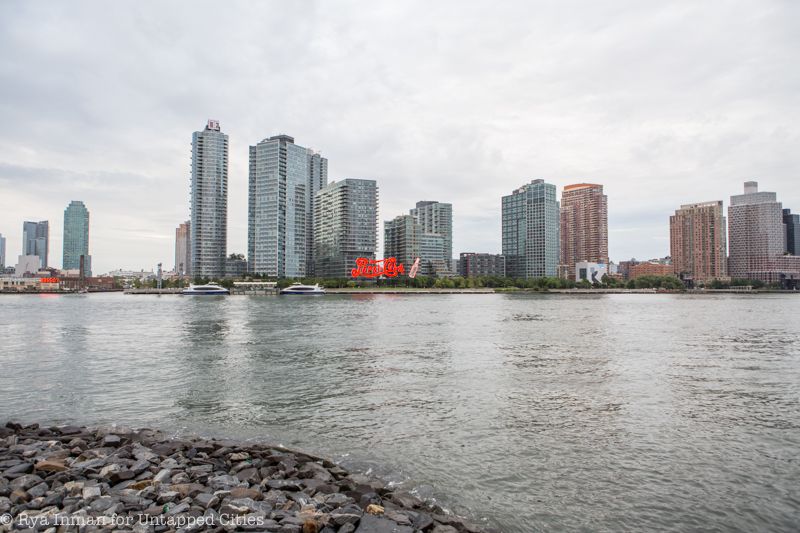
To build Four Freedoms Park, the developers had to get creative with their planning. Roosevelt Island Bridge, the only bridge connecting traffic to the island, has a weight limit of 36 tons, and the shipments of stone and other building materials would have vastly exceeded this limit. One solid granite block from The Room, the three sided chamber at the southern tip of the park, weighs just over 36 tons by itself. The solution? All materials were shipped in via barges, which were loaded up in New Jersey and sent down the East River for offloading by crane on either side of the island.
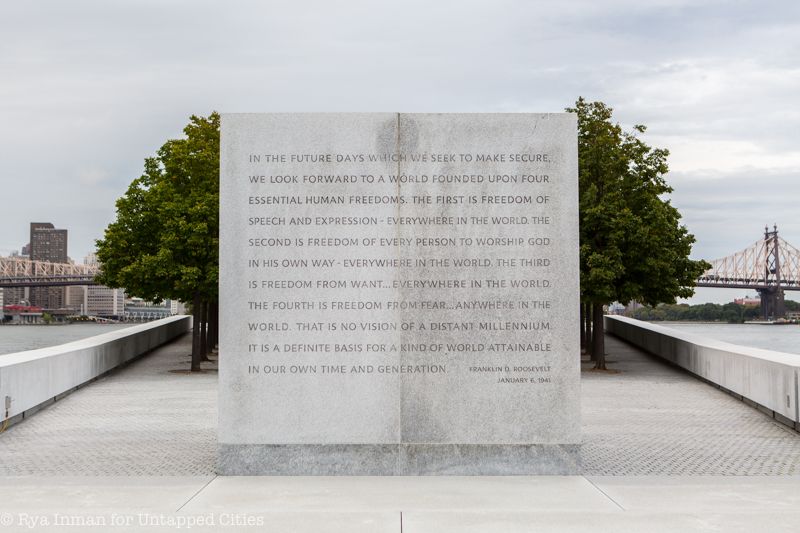
At the tip of Four Freedoms Park, you will find the “Four Freedoms” themselves. An excerpt of President Roosevelt’s 1941 State of the Union Speech outlining these freedoms is inscribed on the back of the stone frame that holds up the bust of President Roosevelt, on the south-facing wall of The Room. Eleanor Roosevelt considered this speech the crown jewel of all his speeches. After her husband’s death, the First Lady worked hard to make sure the Four Freedoms would be incorporated into the Universal Declaration of Human Rights of 1948. A little known monument to Eleanor Roosevelt sits within the United Nations sculpture garden.
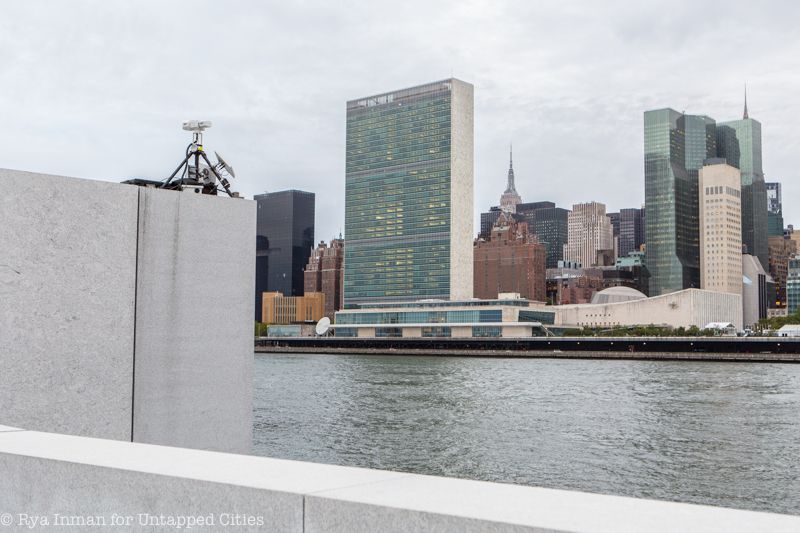
Considering the Four Freedoms’ role as founding principles of the United Nations, it is fitting that the UN building itself dominates Manhattan’s skyline directly across the East River from Four Freedoms Park. The park today also helps to protect the United Nations during General Assembly week. It functions as an off-site surveillance point, where cameras (pictured above) are installed leading up to the General Assembly and taken down once it has concluded.
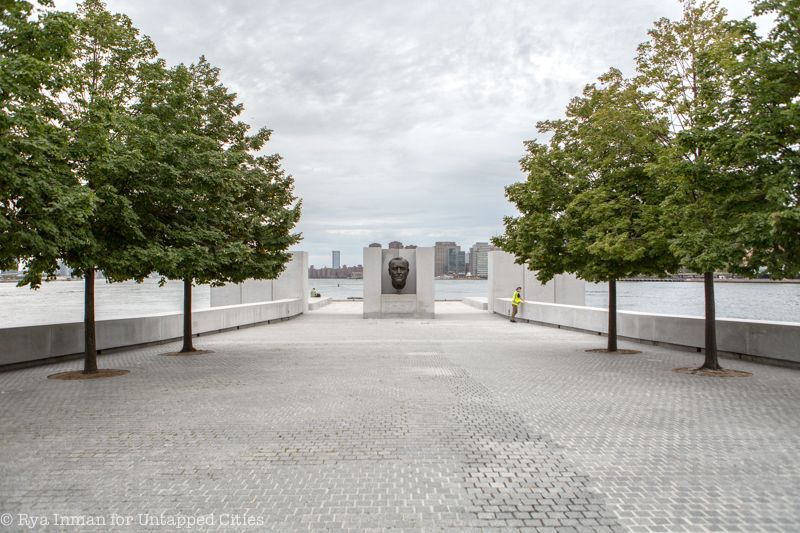
The larger-than-life bust of Franklin D. Roosevelt begins to appear through the trees as you make your way down one of the paths from the entrance to the southern end of the park. Weighing in at 1,050 pounds, the sculpture is entirely suspended from the back, so that the head appears floating in front of the horizon, anchored at the southern tip of the park. The bronze bust also receives a wax treatment twice a year in order to maintain the soft, smooth finish and protect it from the outdoor elements. (You can actually touch the sculpture to get a feel for its texture yourself.)
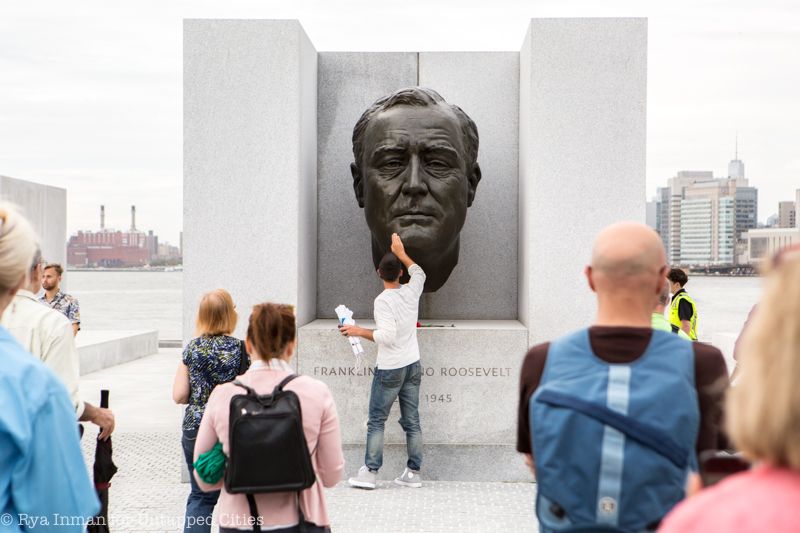
The original clay bust of President Roosevelt was created by the sculptor Jo Davidson upon invitation to the White House in 1933. This original life-sized bust, upon which the Four Freedoms Park statue is based, was recovered from the late sculptor’s studio in France after his death. It was brought to the United States so that it could be recreated in its enlarged form as the centerpiece of Four Freedoms Park.
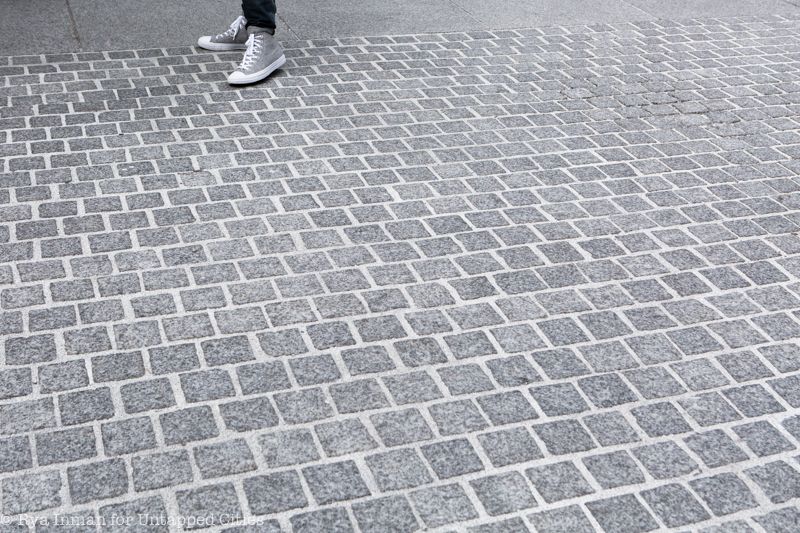
Walking down the paths lined with linden trees, the paving stones look like perfect squares. In fact, each granite paving stone is a cube and measures 4”x4”x4” – a three-dimensional representation of the Four Freedoms embedded in the park’s physical foundation.
Many other elements of the park’s design are significant in such a way, and all were meticulously thought out. For instance, 120 identical Littleleaf linden trees line the triangular lawn of Four Freedoms Park. All of the trees come from a single nursery in New Jersey that had heard rumors of plans for a memorial park and deliberately set aside enough saplings so that the park could be uniformly lined with all the same trees. The granite used to construct the park’s main architecture was also very carefully sourced. All of the stone comes from a single location in Mount Airy, North Carolina – the world’s largest open-faced quarry. The 12,100 tons of granite that was quarried were meticulously carved down into a final 7,700 tons of finished stones.

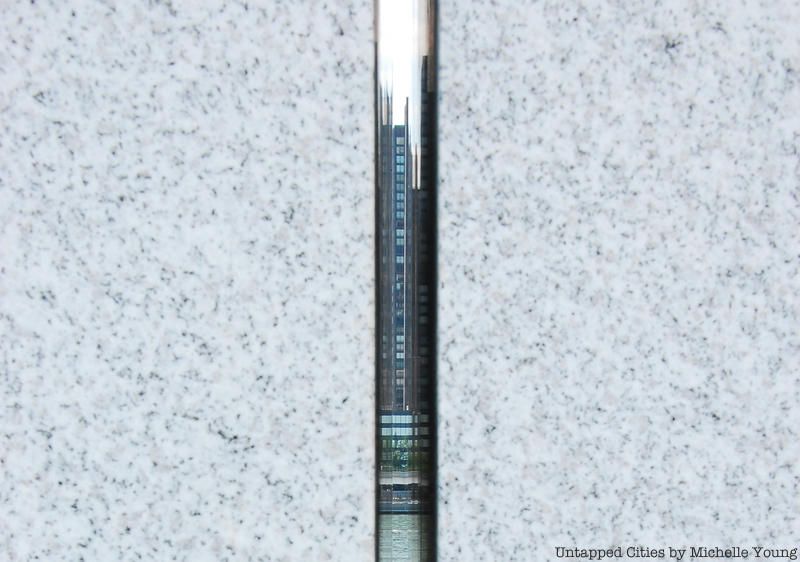
The final stage of a visitor’s journey into FDR Four Freedoms Park is the Room. A three-sided open air chamber with twelve foot-high granite walls, the Room for architect Louis Kahn represented both the essential building block of architecture and an extension of the self:
“I had this thought that a memorial should be a Room and a Garden. That’s all I had. Why did I want a Room and a Garden? I just chose it to be the point of departure. The Garden is somehow a personal nature, a personal kind of control of nature, a gathering of nature. And the Room was the beginning of architecture. I had this sense, you see, and the Room wasn’t just architecture, but was an extension of self.”
– Louis Kahn in a lecture at the Pratt Institute in 1973
If you take a minute to look beyond the beauty of the design in the Room’s interior, small glimpses of New York City all around the park come into view. The granite pillars of the Room’s walls are each six feet wide and spaced one inch apart. From a distance, this spacing appears minimal. Step closer, and scenes of Manhattan and Queens open up to your eye through this miniscule opening. Try to see what kind of photo you can get with such an unusual frame!
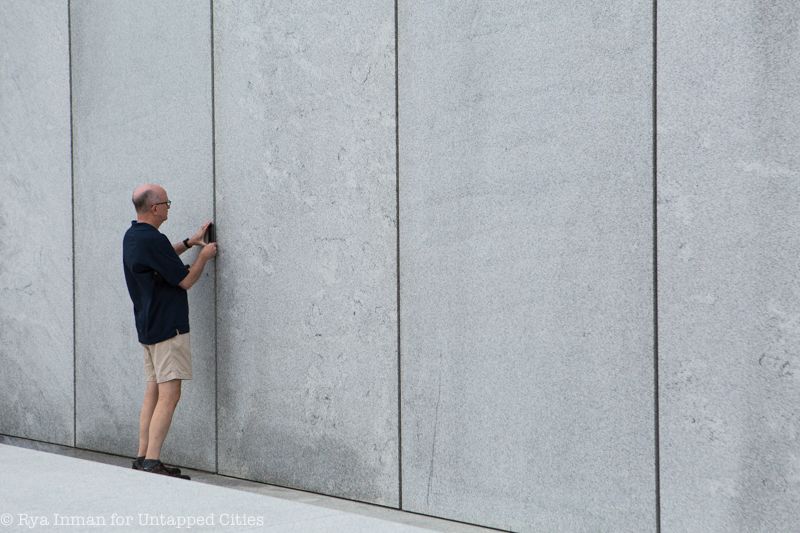
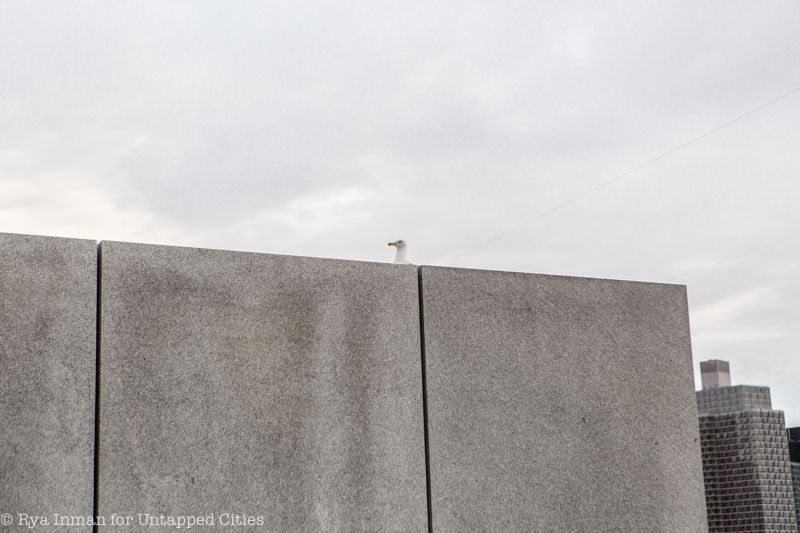
When the park first opened, seagulls would visit and leave a mess behind. Now, the park staff has found a clever, and invisible, solution to their avian visitor problem. Two nearly-invisible lines of fishing wire are suspended at the very edge of the island, across the top of the walls to the Room. These strings create a noise only noticeable – and very unpleasant — to the gulls, so that they stay away. The trick doesn’t always work, and some feathered friends are still seen spending their free time around the memorial, but it has brought some improvements to keeping the memorial a little cleaner.
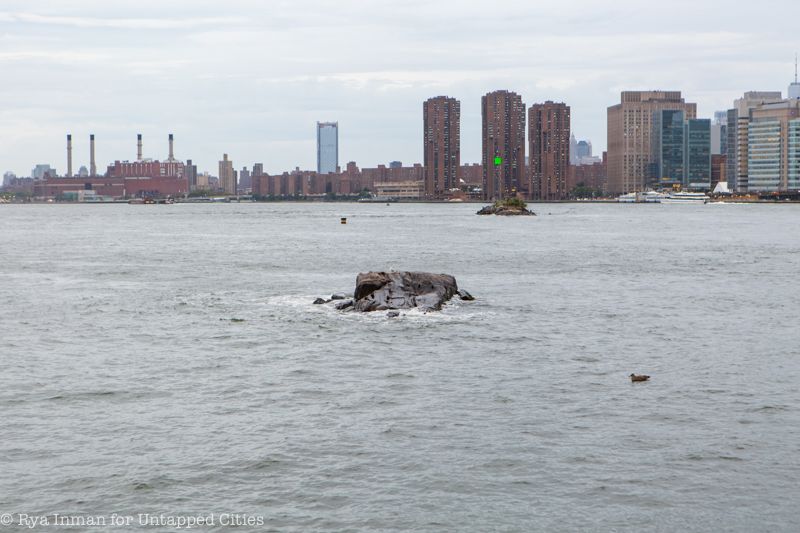
From the southernmost tip of Four Freedoms Park, you can glimpse the piece of bedrock hailed as the ‘last remaining piece undeveloped land’ in Manhattan. The only residents on ‘Roosevelt Island Reef’ are the local seagulls, and the occasional seal, who enjoy their exclusive access to this waterside real estate. They can be sighted perching right on the edge of the bedrock or nestled into the side of it to enjoy a nap.
This small pseudo-island is not to be confused with its southern neighbor, officially named Belmont Island but also known as U Thant Island. Slightly larger and officially recognized as an island, Belmont is actually a man-made reef that formed from debris during the excavation for Steinway Tunnel, the original 7 train passageway between Manhattan and Queens. It was unofficially dubbed U Thant Island in the 1970s in honor of the Burmese former UN Secretary General.
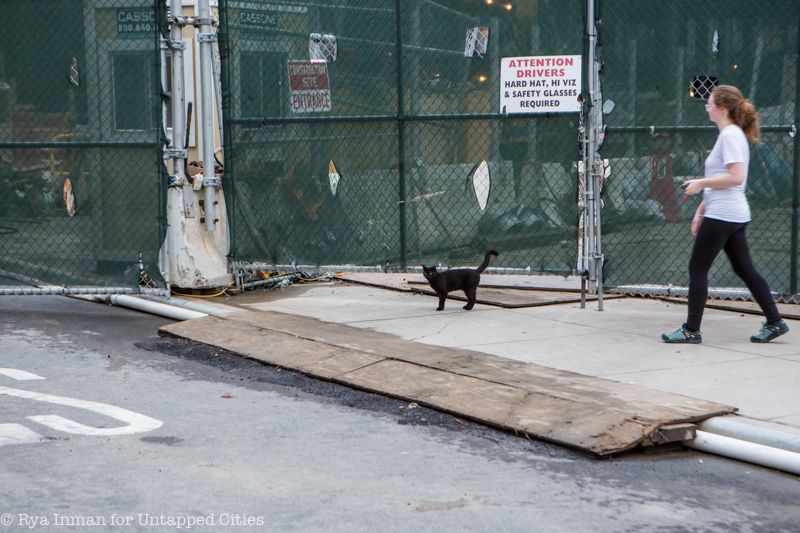
Four Freedoms Park neighbors a cat sanctuary just to the north, inside Southpoint Park, another public park on Roosevelt Island. The Wildlife Freedom Foundation cares for the cat colony, at one time reaching nearly one hundred feral cats who roam the park and the grounds of the smallpox hospital. The cats have even been sighted farther north, making friends with students on the new campus of Cornell Tech and in residential areas of the island.
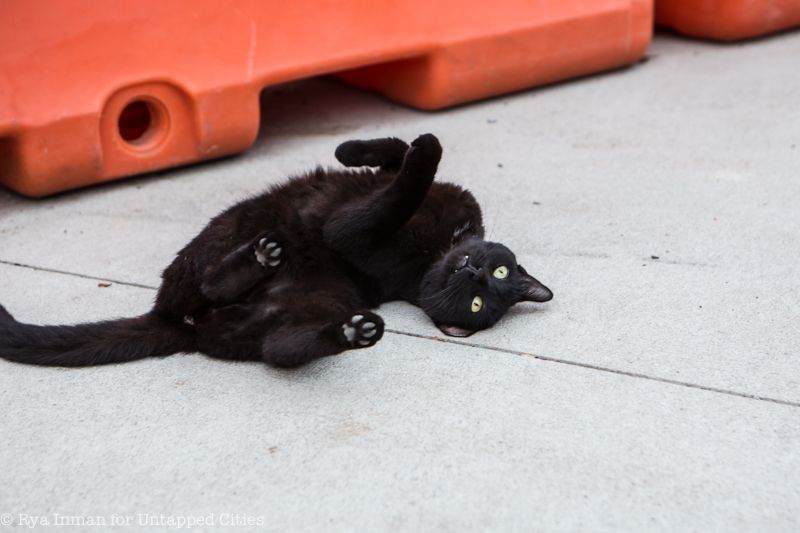
No one really knows how this feral cat colony came to be on this small island in the middle of the East River, but they have been well known to residents of Roosevelt Island since the ‘70s. Some speculate that the colony started during the economic crisis of the 1970s, when Roosevelt Island was known as a frequent dumping ground for unwanted cats. Soon after the cats began to appear, the colony became so over-populated that the group Island Cats, now joined with the Wildlife Freedom Foundation, had to set up a trap-neuter-release (TNR) program to keep the population in check. As much as this feline family is beloved by the human residents of Roosevelt Island, these are not wild animals, and their ideal home includes a warm, comfortable couch indoors. Volunteers are invited to join the foundation’s work to feed and care for the cats, and there is an adoption program in place to find each one a ‘forever home.’
To get to FDR Four Freedoms Park, you can travel by land, by river, and even by air! The F train, NYC Ferry, and Roosevelt Island Tram are all great – and very different – options for transit enthusiasts to try out.
Learn more about the park and its history on the FDR Four Freedoms Park website.
About the author: Rya Inman is an avid photographer and Earth Science major at Columbia University trying to make those two things go together as often as possible. Connect with her on Instagram @ryainman_photo.
Subscribe to our newsletter